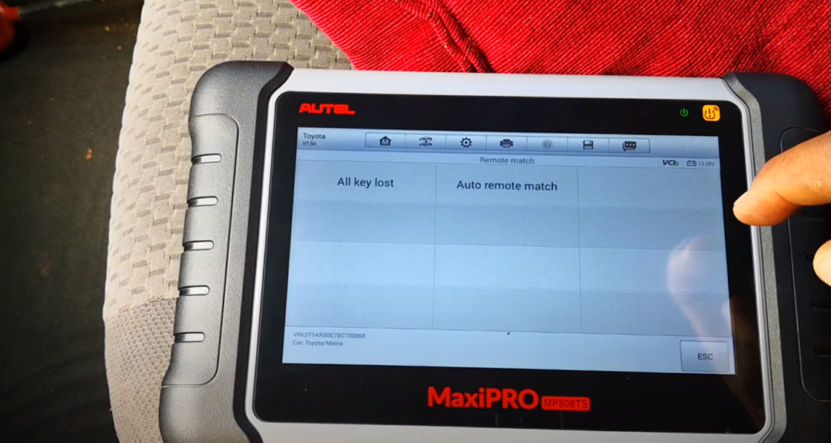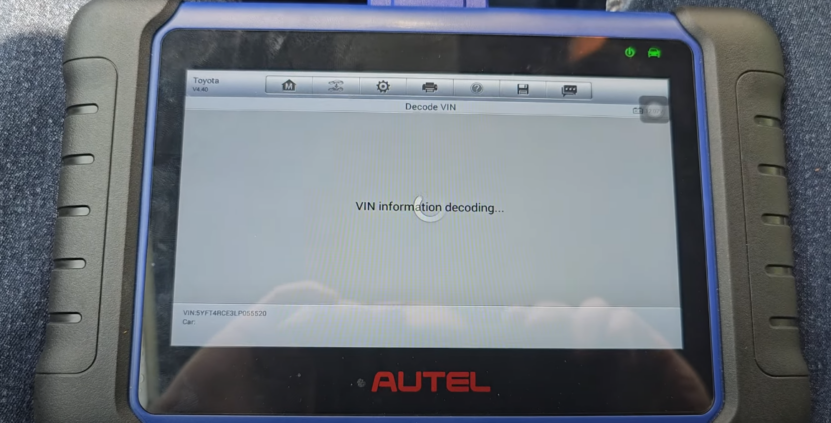The world of automotive diagnostics can be a complex one, especially when it comes to the myriad of OBD2 codes that can pop up on your vehicle’s dashboard. One such code that often confuses car owners is the P1000 OBD2 code. But what does it mean, and how can you address it? In this comprehensive guide, we’ll delve deep into the P1000 code, demystifying its intricacies and offering actionable insights for car owners and enthusiasts alike.
The P1000 OBD2 code is a unique diagnostic trouble code that indicates an incomplete reset cycle of the engine computer. Unlike other fault codes that signal specific issues with your vehicle, the code is more of a status indicator. It essentially tells you that the engine computer’s resetting process hasn’t been fully completed.
What Does P1000 Really Mean?

P1000 is often misunderstood as a fault code, but in reality, it’s not signaling a malfunction. Instead, it’s informing the driver that the engine computer’s reset cycle is still in progress. This can be due to a recent disconnection of the battery or an attempt to clear previous fault codes. It’s crucial to understand that seeing the P1000 code doesn’t necessarily mean something is wrong with your vehicle.
Common Misconceptions
Many car owners panic when they see the P1000 code, thinking it’s a sign of a significant issue. However, this is a common misconception. The code simply indicates that all tests related to the engine computer’s reset cycle are not yet complete. It’s more of a waiting game, signaling the driver to give the vehicle some time to complete its internal checks.
The Role of the Battery
The battery plays a pivotal role in the engine computer’s reset cycle. When you disconnect the battery, it can interrupt this cycle, leading to the appearance of the P1000 code on your dashboard.
Battery Disconnection
One of the most common reasons for the P1000 code to appear is when the battery has been disconnected for a certain period. This interruption can halt the engine computer’s reset cycle, causing the code to flash on the dash panel. For many vehicles, especially Ford models, even if you clear previous codes, the P1000 might still linger due to incomplete erasure.
Addressing the Code Post Battery Disconnection
If you’ve recently disconnected your battery and are now seeing the P1000 code, don’t fret. Typically, running your vehicle for about a week should help clear out any old codes from the computer’s memory. This duration allows the engine computer to complete its reset cycle and remove the P1000 status indicator.
Bypassing the Code: Advanced Techniques
For those who are more technically inclined, there are methods to bypass the P1000 code, especially if you’re keen on getting rid of it sooner than the typical one-week duration.
Using a Resistor for Bypass
On certain vehicles, like some Mazda models, you can employ a resistor to bypass sensors, effectively fooling the engine computer. By bypassing the coolant sensor and air temperature sensor, the engine computer can be tricked into believing the engine has reached a specific “warmed up” temperature.
Mimicking a Completed Cycle
Once you’ve set up the resistor bypass, you can mimic a completed engine cycle. This involves running the engine for a few minutes in drive mode (ensure the drive wheels are raised) and cycling the ignition key on and off. This process can help simulate a completed reset cycle, potentially clearing the P1000 code. However, always consult with automotive technical support services like ATS for detailed testing and guidance.
The Importance of Regular Diagnostics

Regular diagnostics are essential for maintaining the health and performance of your vehicle. With the advent of advanced diagnostic tools, it’s easier than ever to pinpoint potential issues before they escalate.
Early Detection of Issues
Regular diagnostic checks can help identify problems in their early stages. This not only saves you money on potential repairs but also ensures that your vehicle remains in optimal condition. The P1000 code, for instance, can be detected and addressed promptly, preventing any confusion or unnecessary concern.
Ensuring Vehicle Longevity
Consistent diagnostic checks contribute to the longevity of your vehicle. By addressing issues early on and understanding the various codes, including the P1000, you can ensure that your car runs smoothly for years to come.
The Evolution of OBD2 Codes

OBD2 codes have come a long way since their inception. They offer a window into the health of your vehicle, providing valuable insights that were previously hard to obtain.
The Genesis of OBD2 Codes
The introduction of OBD2 codes revolutionized automotive diagnostics. These codes provided a standardized system for identifying issues, making it easier for technicians and car owners alike to understand and address problems.
The Future of Vehicle Diagnostics
With technological advancements, we can expect even more precise and comprehensive diagnostic tools in the future. These tools will likely provide real-time data, further simplifying the process of vehicle maintenance and repair.
Professional Assistance: When to Seek Help

While understanding codes like code is beneficial, there are times when professional intervention is necessary.
Complex Issues
If you’re facing a complex issue or are unsure about a particular code, it’s always best to consult with a professional. They can provide expert guidance and ensure that your vehicle is in safe hands.
Regular Maintenance
Even if you’re well-versed in OBD2 codes, regular check-ups by professionals can help maintain your vehicle’s health. They can offer insights that might not be immediately apparent and provide solutions to potential problems.
FAQs
Is the P1000 code a sign of a major malfunction?
No, the P1000 code is not a fault code. It simply indicates that the engine computer’s reset cycle is not complete.
How long does it typically take for the code to clear?
Usually, running your vehicle for about a week should clear the P1000 code.
Can I drive my car with the P1000 code showing?
Yes, the code is just a status indicator and does not signify any immediate danger or malfunction.
Are there any risks associated with bypassing the P1000 code?
While there are methods to bypass the code, always consult with a professional before attempting any advanced techniques.
How often should I get my vehicle diagnosed?
It’s recommended to have regular diagnostic checks at least once a year or whenever you suspect an issue.
Final Words
In conclusion, the P1000 OBD2 code is not a cause for alarm but rather an indicator of an ongoing process. With a clear understanding of what it signifies and how to address it, car owners can navigate this code with confidence and ease. Whether you choose to wait it out or employ advanced techniques to bypass it, always prioritize safety and consult with professionals when in doubt.